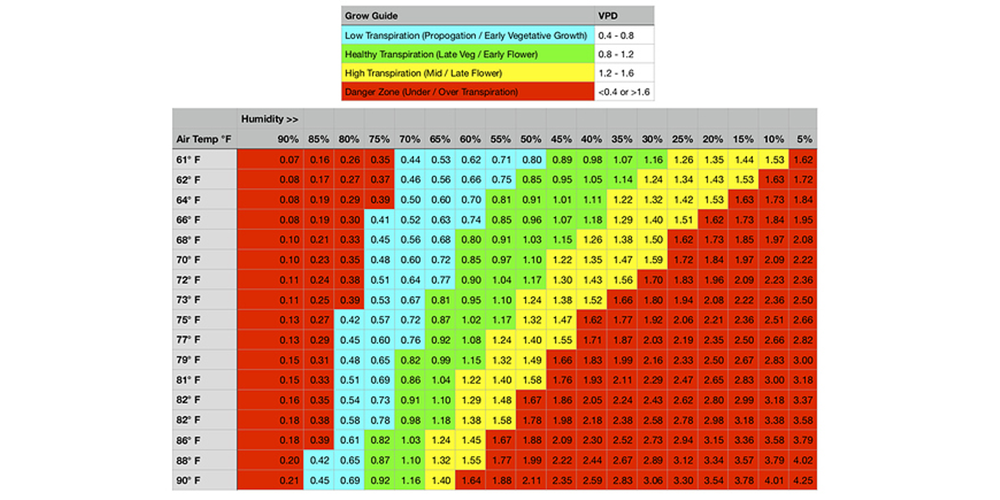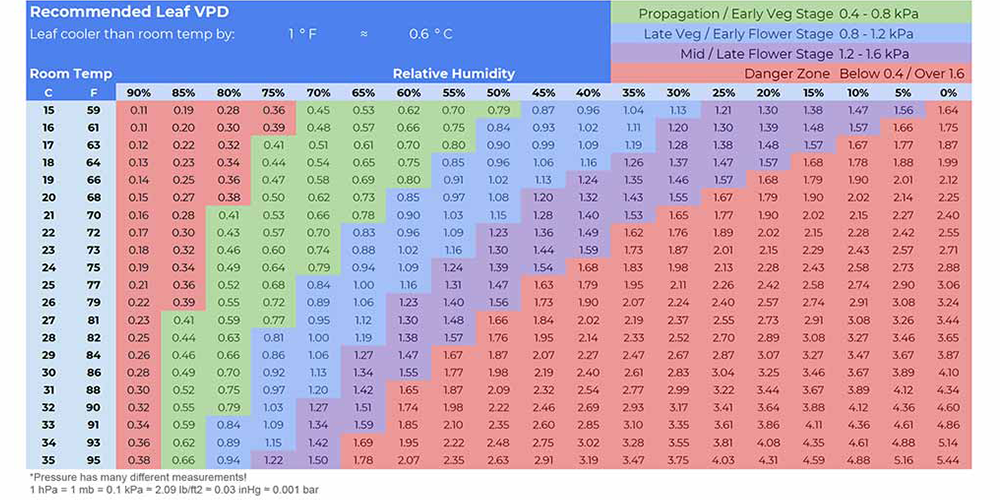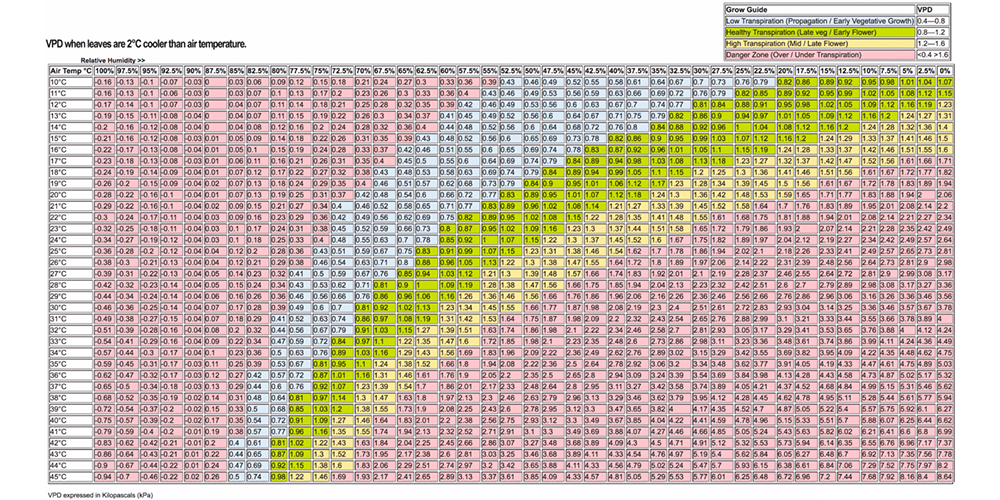What Does VPD Stand for?
VPD stands for Vapor Pressure Deficit. Vapor Pressure Deficit is a measure used to assess the drying power of the air and is commonly employed in horticulture to optimize environmental conditions for plant growth. It takes into account both the temperature and the relative humidity of the air. The concept helps growers create an environment where plants can efficiently transpire and take up water through their leaves while avoiding excessive water loss. Maintaining an appropriate VPD is considered important for achieving optimal plant growth and development in various crops, including cannabis.

(Figure 1: Temperature range: 61-90℉ / 16-32℃. RH range: 0-90%)
The Best VPD for Weed
The plant is forming water, so the plant's surface is 100% RH when transpiration occurs. Ideal VPD for cannabis: VPD ranges 0.8–1.1 (kPa) for the vegetative stage. VPD range 1.0–1.5 (kPa) for the flowering stage.
VPD, or Vapor Pressure Deficit, is a measure of the drying power of the air. It is often used in horticulture, including the cultivation of cannabis, to optimize environmental conditions for plant growth. The ideal VPD for weed (cannabis) can vary slightly depending on the specific stage of growth, but a general target range is often recommended.
For cannabis cultivation, the ideal VPD range typically falls between 0.8 and 1.3 kPa (kilopascals) during the vegetative stage and 1.3 to 1.8 kPa during the flowering stage. These values represent the difference between the air's vapor pressure and the leaf surface's vapor pressure.

(Figure 2: Temperature range: 59-95℉ / 15-35℃. RH range: 0-90%)
Ideal VPD Ranges for Different Stages of Cannabis Growth
1. Best VPD for veg
- Ideal VPD: 0.8 to 1.3 kPa
2. Best VPD for flowering
- Ideal VPD: 1.3 to 1.8 kPa
It's important to note that maintaining the appropriate VPD is just one aspect of creating an optimal growing environment for cannabis. Other factors, such as temperature, humidity, lighting, and nutrient levels, also play crucial roles in overall plant health and development.
To calculate VPD, you need to know both the air temperature and the relative humidity. Various online calculators and tools are available to help you determine the VPD in your grow room based on these parameters.
Keep in mind that these are general guidelines, and specific cultivars or strains may have slightly different preferences. Additionally, experienced growers often fine-tune environmental conditions based on observations and the specific needs of their plants. Regular monitoring and adjustments to the growing environment are essential for successful cannabis cultivation.

(Figure 3: Temperature range: 59-115℉ / 10-45℃. RH range: 0-100%)
Post time: Nov-13-2023
 +86-13376814803
+86-13376814803  robert@hzhongtai.com
robert@hzhongtai.com 











